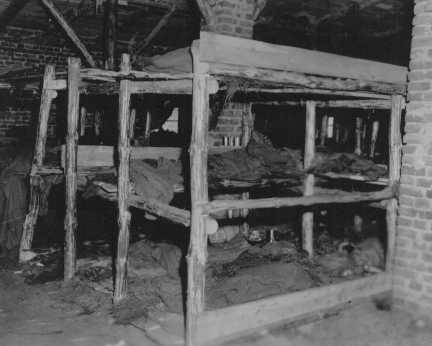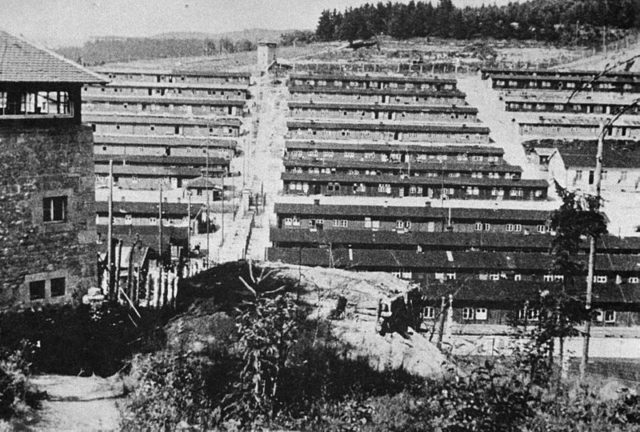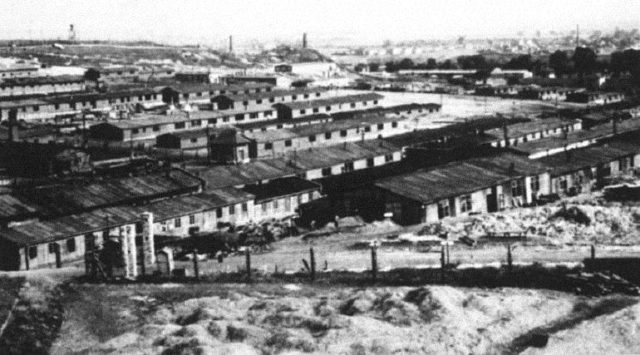The extensive list of active concentration camps used by the Nazis in World War Two would be too long to write. The major camp names went down in history, Auschwitz, Treblinka, and Bergen-Belsen are just three of hundreds of extermination or labor camps the Jewish population were interned in during the war. Not only Jewish people were victims of the horror. Anyone who did not fit in with the Nazis fanatical extremism was at risk.
Some of these camps have been turned into museums, or monuments, since the end of World War Two whereas other lesser known camps have not been maintained, but this doesn’t make them any less worth remembering.
1. Janowska
This camp was set up in October 1941, one year after the Germans set up a factory in southeastern Poland in the suburbs of Lwow on Janowska Street to house the forced laborers right next to the factory. The factory became one of a network that was owned and run by the SS, called the German Armament Works.
Janowska also operated as a transit camp to hold Jews who were on their way to being sent to the killing centers at Auschwitz-Birkenau and Belzec. In Janowska they underwent a selection process, those who were classed as fit to work remained at Janowska to work in the factories and those that were deemed unfit were deported to Belzec or Auschwitz and killed. Some were also shot in Piaski ravine, north of the camp. In 1942 thousands of people passed through here and were killed.
The camp was destroyed in November 1943 after being evacuated as the Germans tried to remove all trace of mass murder. Prisoners were made to open the mass graves that had accumulated around the camp and burn all these bodies. On November 19th, 1943 these prisoners revolted and tried to escape. A few were successful, but most were caught and killed.
2. Kaiserwald
This camp was located in Riga, Latvia and was built in March 1943 when the German occupation stretched to the Baltic States. The first internees were a few hundred prisoners from Germany, but as the Riga, Liepaja and Dvinks ghettos were all destroyed in June of 1943 the remaining Jews of Latvia were deported to Kaiserwald.
In March 1944 there were 11,878 inmates in the camp, some came from Hungary when the Nazis occupied it, and others came from Lodz in Poland. They were put to work for companies such as Allgemeine Elektricitäts-Gesellschaft producing electrical products, or other factories and farms.
When the Soviets came to the Latvian border in 1944 the internees that were fit and healthy were deported to Stuffhof in Poland, anyone who was unfit for work was killed. All Jews who were under 18 or over 30 were killed, as well as any who had been convicted of a crime no matter how small. The Soviets liberated the camp on October 13th, 1944 and used it as a prisoner of war camp but by then all inmates were in Poland.
3. Neuengamme

Operational from 1938 – 1945 an estimated 105,000 inmates were held at Neuengamme, and its 80 subcamps. More than half of these people died while imprisoned there.
The first hundred prisoners came from Sachsenhausen. Work began in the old brickyard and was centered on brick production. This included building a canal to transport the bricks from the site. Inmates had to dig the canal with unsuitable equipment in all weather. Companies established facilities near the camp and prisoners were expected to work there also, some in the production of Geweher 43 semi-automatic rifles for the war effort.
During its operation, more than 50,000 prisoners died at the camp. Disease killed thousands of people. In 1945 the SS destroyed the camp and its records, so historians know little about the operation of the camp itself.
It now serves as a memorial.
4. Flossenbürg

Before World War Two the camp was used for male criminals or those deemed antisocial. It was established in 1938 to be a labor camp where the internees would work in the granite quarries nearby. There were 16 large barracks, and a crematorium was built in a valley just outside the main camp, which was made up mostly of political prisoners.
Thousands of Soviet prisoners of war were sent to Flossenbürg during the war and executed there. Some were kept in a subcamp Mülsen St. Micheln and revolted, killing some of the prisoner guards who were carrying out SS orders. More than 200 prisoners died from burns and wounds as a result before the SS guards stopped the uprising and transferred the 40 leaders to the main camp where they were later executed.
In 1945 there were more than 40,000 prisoners at the camp and as the American forces approached they ordered 22,000 of them to march to Dachau concentration camp, leaving behind the prisoners who were too sick or frail to walk.
5. Plaszów

Built on the grounds of two Jewish cemeteries, many of the prisoners initially at Plaszów came from the Kraków Ghetto in 1943, it became known for its brutality under the ruling of SS Commander Amon Göth.
The camp was shut down the remaining prisoners made a forced death march to Auschwitz. Most of those who survived the march were killed on arrival.
The Nazis completely destroyed the camp. They knew Soviet forces were approaching but on January 20th, 1945 when the Red Army reached the site they only found an empty field of barren land.
Today the area where the camp stood is covered in hills, fields and sparse woodland. There are several memorials on the site.
